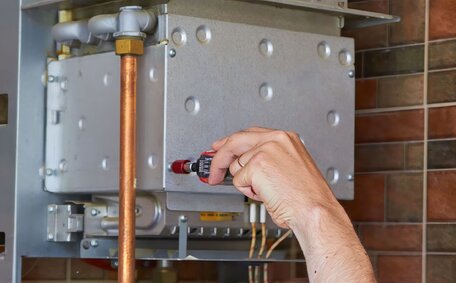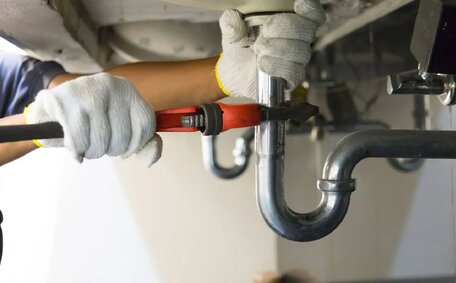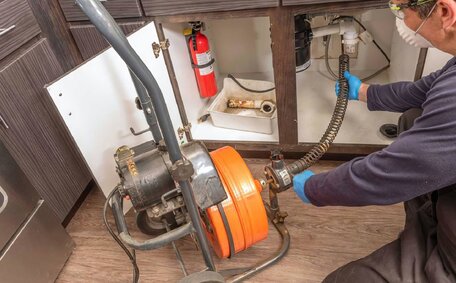Introduction to Gas Meter Upgrades
A gas meter upgrade involves replacing an outdated model with a new, precision-engineered unit. This upgrade provides several benefits for homeowners, including potential cost savings, increased safety, and more precise gas usage tracking.
This article outlines the typical gas meter upgrade process. We will detail the critical steps from the initial consultation to the activation of the new meter. You’ll learn about the different parties involved, like your gas provider, the distribution company, and the technicians performing the work.
We’ll also discuss important considerations like timelines, costs, required preparations, and how upgrading to a smart gas metre can benefit you. Our aim is to inform homeowners on what to anticipate when modernising their gas meter.
Understanding the Overall Gas Meter Upgrade Process
The gas meter upgrade comprises a sequence of steps designed to guarantee a safe and efficient transition. First, the homeowner initiates the application for a new metre, followed by the distributor’s review and assessment of the property.
Once the application is approved, the distributor schedules an appointment at your address with a licenced gas fitter, who will carry out the actual upgrade. Only licensed professionals with the requisite expertise should handle gas meter installations to ensure system safety and efficiency.
Before the technician’s arrival, the homeowner must prepare the site by clearing any obstructions near the existing metre. This gives the gas fitter unhindered access to the area and allows for a trouble-free installation.
While the upgrade takes place, there may be a temporary interruption to your gas supply, which homeowners should be aware of and plan for accordingly.
After installation, the gas fitter relights any pilot lights and confirms your meter’s correct functionality. Post-installation, the homeowner may also need to contact their gas provider to update their account information and billing details.
Preparing Your Property Before the Upgrade
Homeowners are crucial in preparing their property to facilitate a smooth upgrade. This involves clearing any items or debris from the area around the existing gas metre so that the technician can access it easily.
Make sure to trim back any overgrown plants or bushes near the metre. Remove any temporary structures blocking the metre like ladders or scaffolding. Also, secure any pets away from the workspace so they do not interfere with the technician.
A hazard-free area around the gas meter ensures safe working conditions during the upgrade. Work cannot begin in unsafe conditions, as this would postpone the upgrade. Hence, homeowners must check for any electrical cables, gas leaks, body corporate restrictions or other risks within the vicinity of the metre.
Homeowners can expedite the upgrade by ensuring safe and easy access around the gas meter before the technician arrives.
The Role of Gas Providers and Technicians
Gas providers and technicians are essential for a safe and efficient gas meter upgrade. When a homeowner submits an application for a new metre, the gas provider reviews their account details and site information. They will determine if an upgrade is warranted and feasible.
Once approved, the provider coordinates with contracted technicians certified as licenced gas fitters. These experts have substantial training and expertise in gas systems. They follow strict safety procedures throughout the upgrade to protect residents and property.
Technicians assess the area, detach lines from the old meter, and fit the new one.
By entrusting certified gas technicians to handle installations, and liaising with reputable gas providers to facilitate the overall process, homeowners benefit from safe, compliant metre upgrades seamlessly managed by qualified specialists.
Step-by-Step Procedure for Replacing a Gas Meter
Replacing a gas metre involves several key steps, performed methodically by licenced technicians to ensure safety throughout the process:
- The technician arrives on-site and confirms upgrade approval documentation, ensuring your old equipment is ready for replacement. They inspect the metre area to ensure adequate access and safe working conditions.
- The gas supply is temporarily interrupted while the technician disconnects pipes and lines from the old gas metre. They remove the outdated metre from its housing.
- The technician installs brackets, connects pipes and lines to the new gas metre, inserts it into the metre box housing and secures it correctly.
- With the new metre installed, the technician restores the gas supply and carefully checks all fittings and connections for leaks using detection fluid and equipment.
- The technician re-lights any previously operating appliances, tests burner operation and flame integrity to ensure proper gas flow.
- All paperwork is lodged to notify relevant providers/authorities of the completed metre installation.
- The homeowner contacts their gas retailer to update account details to your new metre serial number and confirm service continuity.
Adherence to rigorous procedures allows professionals to securely replace your old meter, boosting both accuracy and performance.
Ensuring Safety During and After the Meter Installation
When upgrading gas metres, safety is paramount during and after the installation process. Only qualified professionals should handle gas systems to prevent risks like leaks, explosions or carbon monoxide poisoning.
Throughout the upgrade, technicians take precautions like monitoring supply pressure gauges, conducting leak checks with detection equipment and ensuring compliance with all applicable gas fitting standards and regulations.
On completion, a safety certificate is issued by the technician, confirming:
- The new gas metre meets manufacturing and performance standards
- All fittings have been pressure tested and inspected for leaks
- The metre operation and gas flow has been validated
- Safety labelling, access clearances and ventilation around the metre box all comply with requirements
With this certification, homeowners have peace of mind knowing qualified technicians have installed the gas metre to the highest safety practises. Technicians also provide guidance to occupants on detecting leaks, maintaining unobstructed metre access and who to contact for gas-related issues.
Adhering to strict safety protocols when upgrading metres, combined with installations performed only by licenced professionals, ensures optimal protection for both homeowners and properties.
Expected Timelines and Potential Delays
Typically, a gas meter upgrade is completed within two to three hours, though it may be subject to delays from varying factors.
One common delay is the time it takes for your gas provider to review and approve your application. This review can take up to 10 business days, subject to the provider’s workload and your case’s complexity.
Inclement weather can also cause delays in the upgrade process. Heavy rain, strong winds, or extreme temperatures can make it difficult or unsafe for technicians to work on your property.
Complications during installation may extend the timeline. For example, if your gas metre is located in a tight or hard-to-reach space, additional time may be required to manoeuvre around obstacles.
If your gas metre needs to be relocated, this will also add to the overall timeframe. Relocations require additional planning, permits, and coordination with other parties, such as your local council or property manager.
To mitigate potential delays, prepare and make your property accessible before the technician’s visit. Clear any obstructions near the gas metre and secure any pets away from the work area. Additionally, check for any hazards or restrictions that could impact the installation process.
Costs and Fees Associated With Gas Meter Upgrades
Homeowners should budget for possible costs and fees when upgrading their gas meter. While the exact charges vary between providers, property types and locations, typical expenses may include:
- Service fees from licenced technicians to install the new gas metre, which can range from $250 - $800 depending on complexity.
- Potential costs for relocating the metre to make the upgrade possible, such as extending gas lines.
- Administration fees from gas providers processing applications and coordinating the metre installation.
- Additional charges unique to certain areas – for example, upgraded metres in Dulwich Hill, Sydney may necessitate council permits at around $200.
Some providers do offer basic metre upgrades at no upfront cost as part of a meter replacement program. Additionally, modern smart gas metres can save money over time through more accurate gas usage tracking.
Homeowners should confirm all associated fees when planning a metre upgrade. Understanding the full costs involved allows appropriate budgeting for what’s ultimately an important upgrade yielding safety benefits, potential savings and infrastructure improvements.
Benefits of Upgrading to Smart Gas Meters
Upgrading to a smart gas metre provides several advantages for homeowners compared to traditional analogue models:
- Enhanced Accuracy: Smart meters use digital technology for precise gas usage readings, surpassing mechanical dials.
- Remote Monitoring: Smart metres can transmit data remotely to providers, enabling real-time tracking of gas usage without requiring manual readings.
- Potential Cost Savings: With more accurate readings of household gas consumption, bills can be optimised to match exact usage patterns.
- Leak Detection: Many smart metres have built-in sensors to detect possible gas leaks and automatically alert providers if detected.
- Increased Safety: Smart gas metres can automatically shut off gas flow during emergencies or abnormal events for added safety.
- Usage Insights: Smart metres provide granular analytics on gas usage via online portals, allowing identification of trends and savings opportunities.
By upgrading ageing analogue gas metres to modern, digitally-enabled alternatives, homeowners gain multiple benefits spanning accuracy, safety, savings, and convenience. As smart metre networks develop, even more functionality will emerge - presenting a worthwhile upgrade option for most properties.
Testing for Gas Leaks and Relighting Appliances
After installing a new gas metre, the technician will thoroughly test for any potential gas leaks. They use special detection fluid and electronic sniffers to check all fittings, joints, and connections on the new metre. Even the slightest leak is unacceptable and will be immediately fixed before proceeding.
If gas supply was interrupted, the technician will relight appliances such as hot water systems and stoves. They ensure pilot lights are ignited and test burner operation to validate relighting your appliances and full gas flow restoration.
The technician also provides guidance to homeowners on how to check for leaks and relight appliances if required in future. With the technician’s leak checks and appliance testing, homeowners gain peace of mind knowing all gas systems are functioning safely post-installation.
This includes inspecting connections for bubbles using soapy water, noticing rotten egg smells, and following manufacturer guidelines for safely reigniting pilot lights.
Frequently Asked Questions
Understanding the nuances of a gas meter upgrade can be complex, leading to questions among homeowners. This FAQ section addresses common inquiries to help you feel confident about your decision to upgrade.
How long does a gas metre upgrade take?
A gas meter upgrade generally takes 2 to 3 hours, though this can vary due to factors like weather, installation complexity, and relocation needs.
Is it necessary for me to be home during the upgrade?
While being home is advised, it is not mandatory during the upgrade. It’s not necessary for you to be home during the upgrade, provided the area around your gas meter is accessible and clear. Additionally, secure any pets and provide contact information for the technician to reach you if needed.
Who is responsible for relighting my gas appliances after the upgrade?
The technician relights any gas appliances turned off during your new meter’s installation. They will also test the burner operation and flame integrity to ensure everything is functioning correctly.
What if I have special requirements, such as life support equipment?
If you have life support equipment or other special requirements, it’s essential to inform your gas provider and the technician before the upgrade. They will take necessary precautions to ensure your needs are met during the process.
How can I determine if a gas meter upgrade is necessary?
Your gas provider evaluates the need for an upgrade based on your current meter’s age and condition. To determine if you need to upgrade your metre, contact your provider for an assessment.
How much does a gas metre upgrade cost?
Gas meter upgrade costs vary, encompassing licenced technician fees, potential relocation expenses, and provider administration fees. Contact your provider for specific pricing information.
You can reach Dulwich Hill Plumbing by calling 1300 349 338 or emailing [email protected]. Our team of licenced professionals is ready to help you with all your gas metre upgrade needs.
What advantages does upgrading to a smart gas meter offer?
To read more about smart gas metres, they offer several advantages, including enhanced accuracy, remote monitoring, potential cost savings, leak detection, increased safety, and usage insights.
Can I upgrade my gas metre myself?
No, gas metre upgrades should only be performed by licenced professionals to ensure safety and compliance with all applicable standards and regulations.
What should I do if I suspect a gas leak after the upgrade?
If you suspect a gas leak, immediately contact your gas provider or a licenced professional like Dulwich Hill Plumbing. Do not attempt to fix the leak yourself.
Do I need to notify my electricity provider about the gas metre upgrade?
Typically, there is no need to notify your provider about a gas meter upgrade, which differs from electricity arrangements. However, it’s always a good idea to check with your providers to ensure they have the most up-to-date information about your property.






